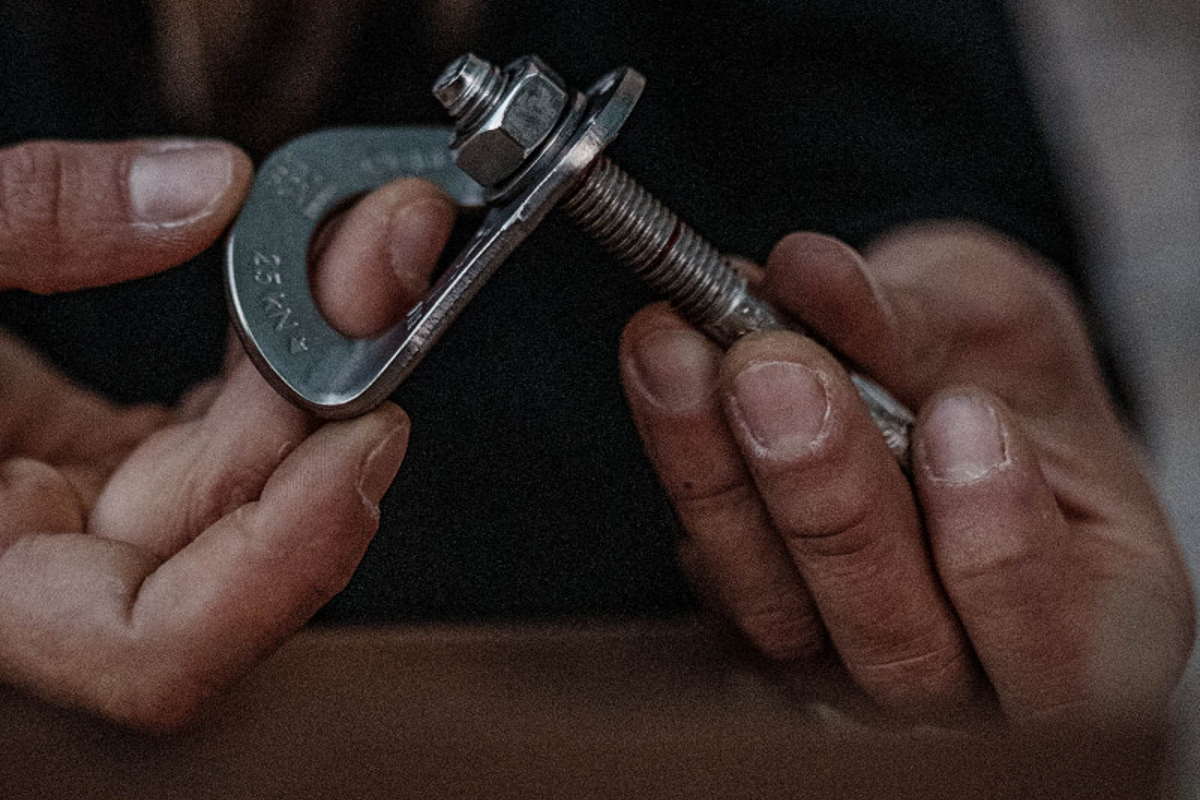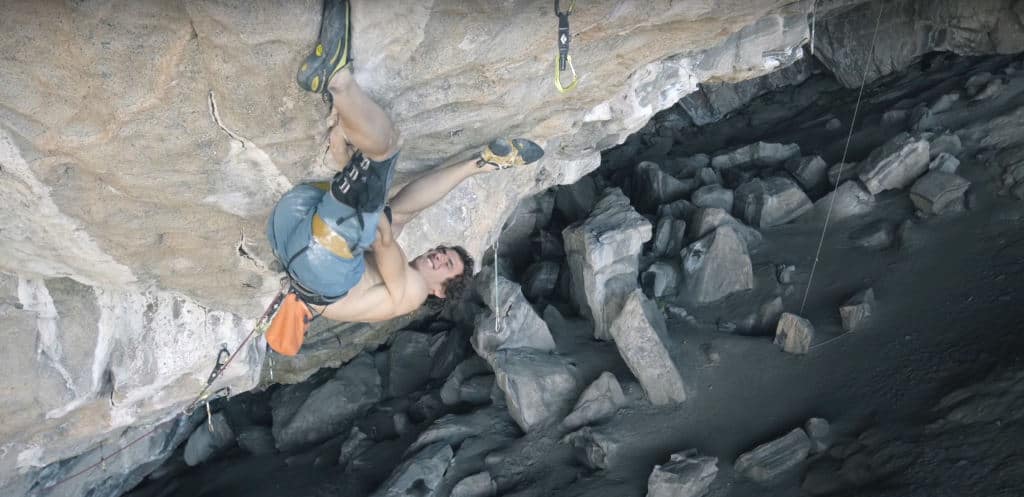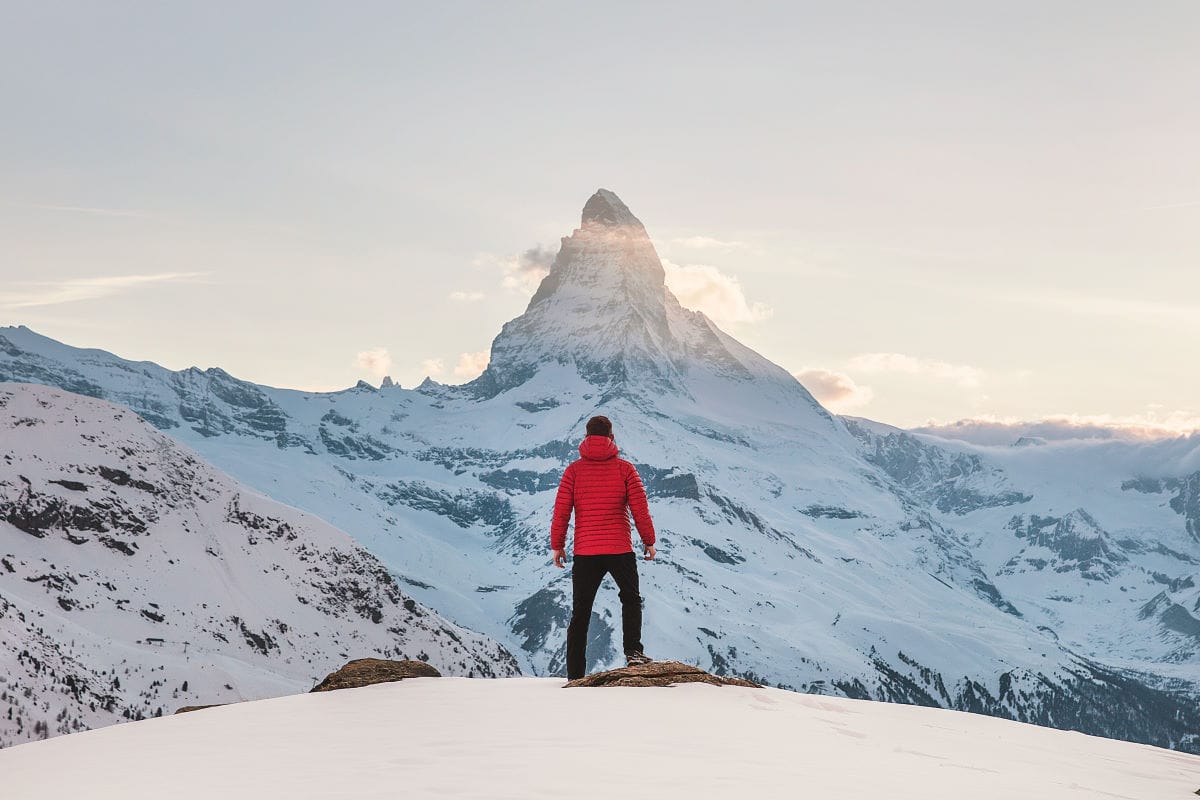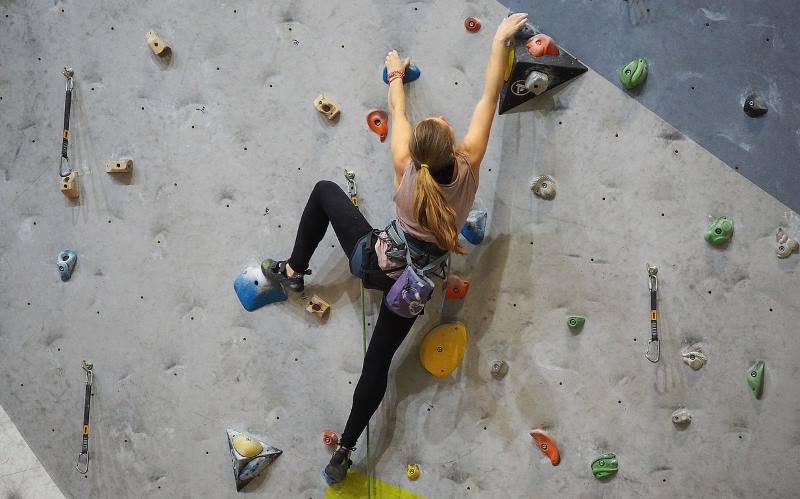“The Alpinist” was recently released worldwide and put viewers on the edge of their seats. Scenes of a young climber with no ropes effortlessly switching from his bare hands to ice axes were nerve-shredding – perhaps even more so for experienced climbers.
The star was Marc-André Leclerc, a relative unknown in the climbing world for good reason. He genuinely didn’t care about spraying his achievements. Some of his greatest climbs only made it into mainstream climbing news because friends told friends and it eventually got out.
Born in 1992 in Nanaimo, British Columbia in Canada he was out in the mountains from a young age. Initially he was inspired by the classic mountaineering books of Chris Bonington and others – his first instinct was for outdoor adventure. After being introduced to a climbing gym at 9 years old he found his calling.
After years of indoor training and local outdoor exploration, as a young adult he moved to Squamish – a world renowned climbing area with a huge mix of ice, rock, and alpine climbs. It didn’t take him long to settle into the local crowd and he was soon making a name for himself. Eventually sponsorship would allow him to do exactly what he wanted all the time.
Leclerc’s pure love for climbing at the fringes of the world and at the edge of his skill is much like Brad Gobright and free soloist Hansjörg Auer. They all shared a full-on attitude towards their climbing and would stop at nothing once they had a goal in mind.
Where To Watch The Alpinist Streaming Online?
The Alpinist is easy to stream online now at Amazon. It was initially meant to release in early 2020 but was pushed back and back. Eventually there was a limited theatrical release in the US on September 10th 2021, then a wider release, it can now be streamed and downloaded worldwide
Reviews are great, with a 93% critic’s score and 97% audience score on Rotten Tomatoes. Of course it has been called “Free Solo on ice” and it’s really an apt comparison. Alex Honnold features pretty heavily as a talking head, comparing notes and genuinely being freaked out about Leclerc’s ice solos.
It’s a great documentary and we personally recommend it as one of the best climbing documentaries ever made. Read our favorites for best climbing documentaries and best mountain climbing documentaries.
What Did Marc-André Leclerc Climb?
Marc-André was an incredible all-round climber who enjoyed everything from sport and trad on rock, to alpine and ice climbing. He was prepared to climb anything, anywhere, in any weather, by any means. Much of the stunning routes shown in The Alpinist show him switching from rock, to ice, to snow with no hesitation in between.
Many of Marc-André’s climbs are probably unknown as he didn’t tend to advertise what he’d done. Of what we know, these are some of his most notable climbs. Many solos, free solos, and big link-ups aren’t here purely because of the sheer amount he did:
- 2013 – The Temptation of St Anthony, Squamish – First Free Ascent – Rated 5.13R/X – One of Marc-André’s first hard free ascents on rock. Previously an aid line, Leclerc put bolted anchors into six pitches but climbed it using mainly trad gear and very old-school hooks. The R/X rating is for big runouts (35 feet in one case!) and very dangerous fall potential.
- 2014 – Free solo link up of three routes – East Pillar Direct 5.10+, Navigator Wall 5.10+, and Northeast Buttress 5.9+ on Mount Slesse, British Columbia – Marc-André had previously free solo’ed Northest Buttress and a different 5.9 route in one day. In August 2014 he set out to try three routes – two that were notorious for loose, flaky rock – all alone and unroped. He managed the feat in just over 12 hours.
- 2015 – First ascents of Directa de la Mentira on the North Face of Cerro Torre, First reverse traverse of the Torres – Patagonia – These roped ascents were some of his first experiences of climbing in the historic Patagonian range and proved his dedication and boldness in attempting unclimbed routes with a rope and a partner.
- 2015 – First Solo of The Corkscrew 5.10d, Cerro Tore – Patagonia – Mostly free soloing the route but using a short rope and almost no protection in some sections. An incredible acheivement both technically and mentally. Brette Harrington was with him in Patagonia and she made the first female solo ever in Patagonia, climbing the Chiaro di Luna route solo up while picking up another climbers lost gear on the way down!
- 2015 – Free Ascent of the Muir Wall, El Capitan – Yosemite – A rare free ascent of the classic sustained 33 pitch route. Done with partner Brette Harrington and Alan Carne.
- 2016 – First Winter Solo of Torre Egger – Patagonia – This was possibly Marc-André’s most daring attempt to date. It was only the second time this dangerous face had been climbed in winter conditions, this time totally alone. See interview with footage below.
- 2017 – First Free Solo of Tall Storey 5.11c, Echo Canyon – Alberta – A seven pitch, 607 foot sport route at a hard 5.11c. This was his hardest free solo on rock to date.
- 2018 – First Ascent of the North Face of the Main Tower of Mendenhall Towers – Alaska – Along with Ryan Johnston, who’d been planning to climb the 2,500 foot face for years.
Jargon Note: Free climbing means using a rope for safety and falling but pulling on the rock with your hands. This is versus aid climbing which is an older style where you can put the gear into the wall and pull up on that. Free solo means climbing without pulling on gear and without a rope.
Did Marc-André Leclerc Die?
On the 5th of March 2018 Marc-André Leclerc and Ryan Johnson had completed a new route on the north face of the Main Tower of the Mendenhall Towers, Alaska. It was previously unclimbed and the pair had texted friends and partners of their topping out as well as posting views from the peak to Instagram.
Their descent route started down the East ridge and then required them to rappel down the fourth tower. After friends and family realized they hadn’t made contact by the evening of the 7th when they were expected, they contacted local search and rescue teams who started a search on the 8th. They were stopped from serious efforts using helicopters until the weather cleared on the 13th.
Has Marc-André Leclerc’s Body Been Found?
Two teams of helicopters located what looked like the orange climbing rope the pair had been using. It was buried underneath snow and ice in a gulley crevasse part of the way down the fourth tower. Apparently, an avalanche overtook them.
One helicopter also used a Recco system. This is a piece of gear is a harmonic radar system that can pick up Recco tags built into outdoor gear, as well as metal and electronics. According to the scans made, the climbing partner’s bodies were buried 15 feet under snow at the position of the rope.
The bodies are essentially unrecoverable as a team would have to climb into their position and dig into now hard and compacted snow which is most likely now ice. This digging would move snow and would be very likely to cause an avalanche at their position.
Their bodies may be recovered years in the future if there is significant thawing. Marc-André died on his birthday at 25 years old, Ryan was 34. Marc-André Leclerc and Ryan Johnson are now part of the mountain.
How Did Marc-André Leclerc Die?
The circumstances that lead to their death aren’t known but a few things are likely. Knowing the pair made it to the top and the position they were in means they were very likely rappelling back down to the base of the mountain.
Rappeling requires building an anchor, either by screwing holes into ice and threading a rope through, or leaving gear in the rock or ice to rappel from. It could have been that while the pair were rappelling the anchor failed – for a multitude of reasons. Rock and ice can break, gear can slip, or ice and rock fall can push gear out. They were both very experienced climbers but gear can always fail.
Another possibility is that ice or rock fell, causing one or both of them to fall. Another very likely situation is an avalanche, where a weak patch of snow slips and triggers a larger wave of snow to cascade down a mountain. This could have overcome the two causing them and their rope and anchor to come down with them. At this point, they’d be buried in snow.
Escaping from being buried in snow is extremely difficult without special protective gear, knowledge, and in most cases help from others. The pair were only one or two rappels and a short walk from where they had stashed their gear and skis for the rest of the way down.
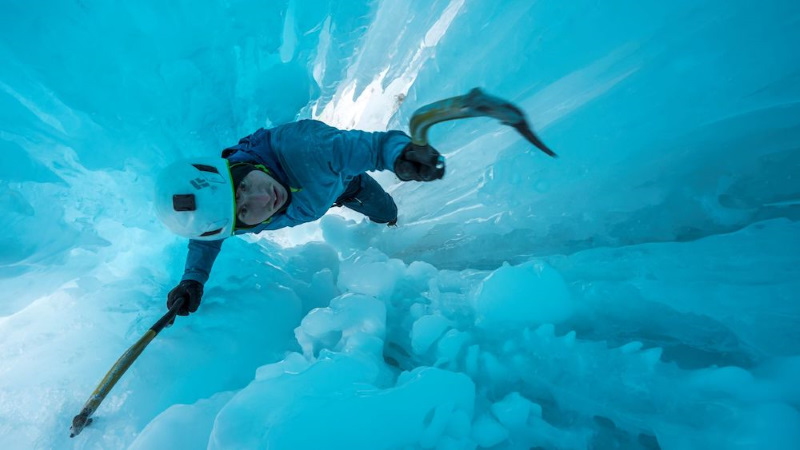
How Did Marc-André Leclerc Get Down From His Solo Climbs?
Depending on the route climbing Marc-André got down from the top of his climbs a few different ways. On big free solo rock climbs there is often a way to walk back down the easy part of a rock formation. On alpine routes, he’d generally have a very thin rope with him purely for setting up a rappel.
Normally on alpine you’d climb the steepest parts then walk to the lowest section you can and find an easier descent route. Often it involves a bit of easier downclimbing and a few rappels, but you’re aiming to get to a walkable part fast. In alpine situations like in Patagonia setting up a rappel anchor can be tricky but some routes do have bolts or very old pitons to use for safety.
Without pre-placed gear, some climbers will either set up a V-Thread, which is done by making an inverted V hole into the ice with an ice screw, then threading the rope through and rappeling off of both strands of the rope. See how this is done. If there is good rock, climbers will leave some trad gear placed in the rock.
Sometimes in a bad situation where you absolutely need to get down, you can just throw the rope over a good-looking piece of rock and rappel on that. Take a look at the worst rappel you’ll ever see using this method.
Read our full article on how rock climbers get down
Marc-André Leclerc’s Girlfriend – Brette Harrington
Brette Harrington and Marc-André shared an enduring love for the outdoors. They met while he was living under his friend’s staircase and quickly hit it off on big outdoor days. They had been together for nearly six years when Leclerc disappeared in Alaska.
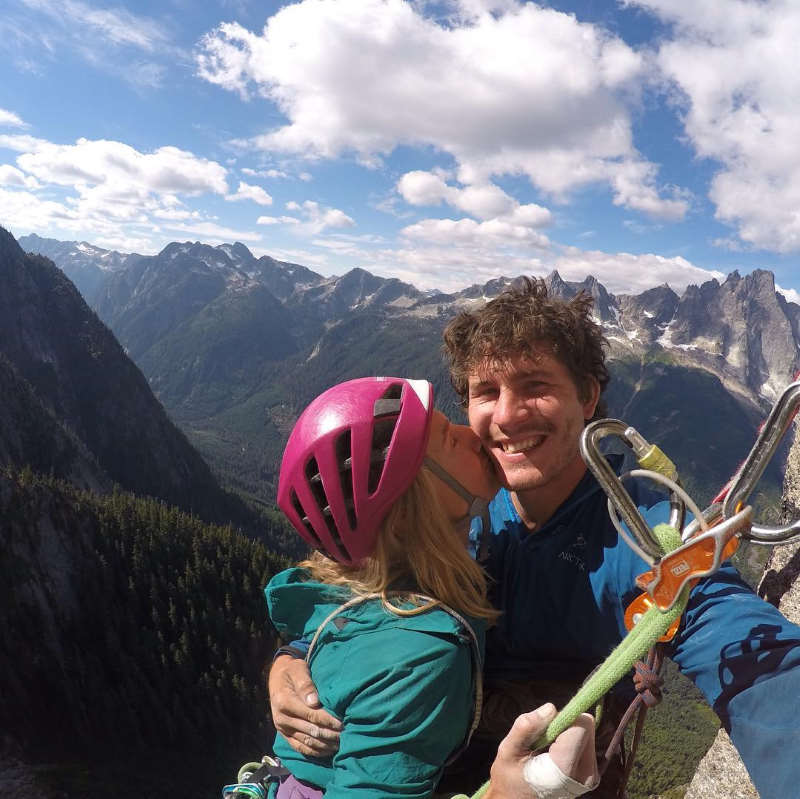
They free solo’d and did big alpine days in Patagonia together so she was well aware of the risks he was taking. She also got involved in the rescue effort before the bad news was given. Brette still climbs as hard as ever and just recently climbed El Corazon on El Capitan, a modern classic 31 pitch route.
Marc-André Leclerc’s Blog
You can still read Marc’s blog about his adventures here. He chronicled many of his big climbs and outings throughout the years, including one of his solo trips to Patagonia here. His sparsely updated Instagram does have some amazing shots of his climbs still up.
